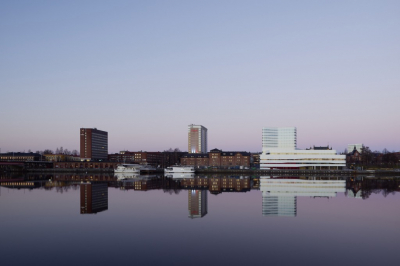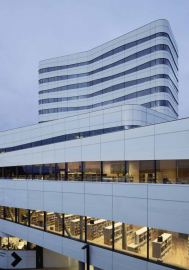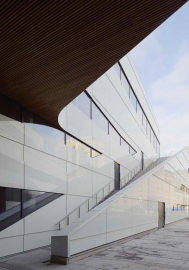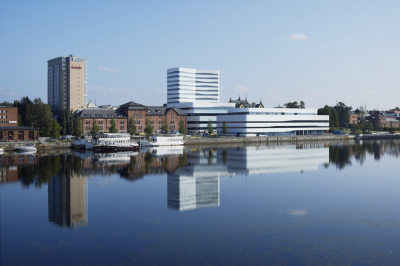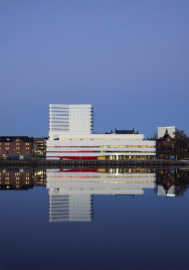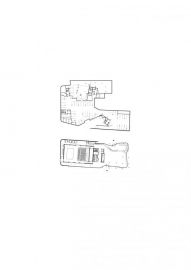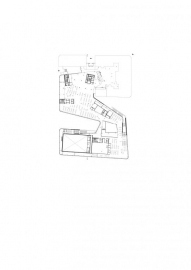The Weave
Väven a weave of culture, literature, knowledge, socializing, recreation, and food
The cultural center Väven is part of an urban development project - the City between the Bridges. The new development is seen as an important catalyst for Umeås urban regeneration, and it aims to create a cultural area along the river Ume. Väven is located in Umeås city center, next to the town hall park on the river. The new cultural center covers a whole block in the heart of the city. One part of the building lies on a site defined by the existing city grid, while the rest occupies part of the quayside a zone characterized by transient activity and flexibility of use.
The new building weaves, hence the name Väven, meaning weave in Swedish, multiple cultural programs and activities together, providing one common stage. A weave of culture, literature, knowledge, socializing, recreation, and food is expressed in the buildings facades and levels. Väven unifies various public functions in one complex building. The overall experience emphasizes a whole made up by many parts, giving the building a human scale, braking down the barriers between internal activities and public space.
The concept of weaving is not only present in the cultural aspects, but also in the many different functions of the building, including hotel, conference center, black-box theatre, museum, library, and many others, with one large, unifying gesture. This is achieved by wrapping the manifold functions of the building in one homogenous façade, consisting of varying and slightly shifting façade bands forming the building envelope and creating a strong graphical reference. The building also weaves into the city in between, above, and below the existing city picture.
The design takes its cues from the buildings intended use and function, but also the characteristics of the site. The reference of the birch trees, a tree typical for the Umeå region, was used in developing the concept. The white bark resembles the closed parts of the building, while the darker areas symbolize the open, glazed parts. The choice of materials spring out of the Birch tree design concept and the aspiration to create a building that communicates with its surroundings by reflecting the people around it, the sky, and the river. Natural materials are used to the greatest extent possible, e.g. are floors and suspended ceilings made out of oiled oak.
The building envelope has been developed in consideration to the low energy design strategy. The highly insulated façade is covered mainly with glass. The façade is pre-fabricated and the performance has been laboratory tested to ensure that the system is weather tight and robust. Triple Glazed Windows are used throughout, and solar reflective glass is used as solar shading on all exposed facades. The courtyard between the existing- and the new buildings has been covered and the climatized atrium contributes to the insulation and energy effectiveness of the new and existing buildings.
The building is designed as a flexible building, where interiors can be changed depending on demand without costly and resource intensive reconstructions. This is achieved by a flexible ventilation and daylight strategy. The artificial lighting strategy is based on LED technology to ensure low energy consumption.
Size building: 27.000 m²
Size site: 4.000 m²

